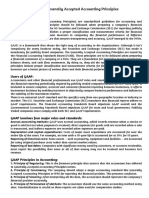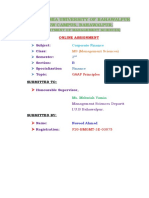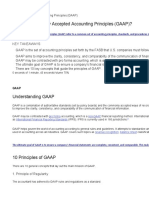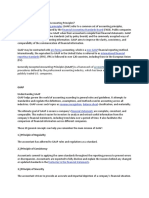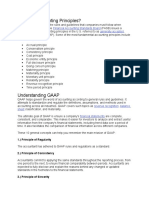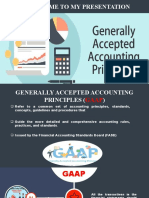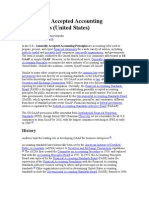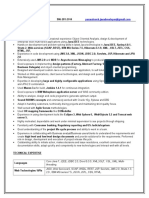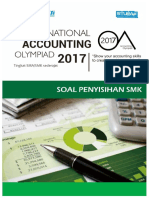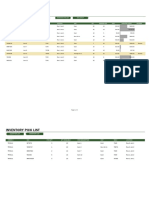What is GAAP?
GAAP, or Generally Accepted Accounting Principles, is a commonly recognized set of rules and
procedures designed to govern corporate accounting and financial reporting in the United States (US).
The US GAAP is a comprehensive set of accounting practices that were developed jointly by the Financial
Accounting Standards Board (FASB) and the Governmental Accounting Standards Board (GASB), so they
are applied to governmental and non-profit accounting as well.
US securities law requires all publicly-traded companies, as well as any company that publicly releases
financial statements, to follow the GAAP principles and procedures.
In addition, or as an alternative, are the International Financial Reporting Standards (IFRS) established by
the International Accounting Standards Board (IASB). The IFRS rules govern accounting standards in the
European Union, as well as in a number of countries in South America and Asia.
Understanding GAAP
GAAP helps govern the world of accounting according to general rules and guidelines. It attempts to
standardize and regulate the definitions, assumptions, and methods used in accounting across all
industries. GAAP covers such topics as revenue recognition, balance sheet classification, and materiality.
The ultimate goal of GAAP is to ensure a company's financial statements are complete, consistent, and
comparable. This makes it easier for investors to analyze and extract useful information from the
company's financial statements, including trend data over a period of time. It also facilitates the
comparison of financial information across different companies.
What Are the 10 Principles of GAAP?
There are ten principles that can help you understand the mission of the GAAP standards and rules.
1. PRINCIPLE OF REGULARITY
The principle states that the accountant has complied to the GAAP rules and regulations.
2. PRINCIPLE OF CONSISTENCY
The accountants should enter all items in exactly the same way that it has been fixed. By applying similar
standards in the reporting process, accountants can avoid errors or discrepancies.
�If the standards are changed or updates, the accountants are expected to fully disclose and explain the
reasons behind the changes.
3. PRINCIPLE OF SINCERITY
As per this principle, the accountant should provide the correct depiction of the financial situation of a
business.
4. PRINCIPLE OF PERMANENCE OF METHOD
The focus of this principle is that there should be a consistency in the procedures used in financial
reporting.
5. PRINCIPLE OF NON-COMPENSATION
The full details of the financial information should be disclosed including negatives and positives. This
should be done without the expectation of debt compensation by an asset or revenue by an expense.
6. PRINCIPLE OF PRUDENCE
The financial data representation should be done “as it is” and not based on any speculation.
7. PRINCIPLE OF CONTINUITY
The principle assumes that the business will continue its operations in the future.
8. PRINCIPLE OF PERIODICITY
The accounting entries are distributed across the suitable time periods.
9. PRINCIPLE OF FULL DISCLOSURE
While creating the financial reports, the accountants must strive for full disclosure.
�10. PRINCIPLE OF UTMOST GOOD FAITH
This principle states presupposes that the parties remain honest in transactions.
While the GAAP principles are used by large companies while reporting their financial information, if you
believe your small business may eventually be subject to GAAP, you may want to adopt the standard
early on.

